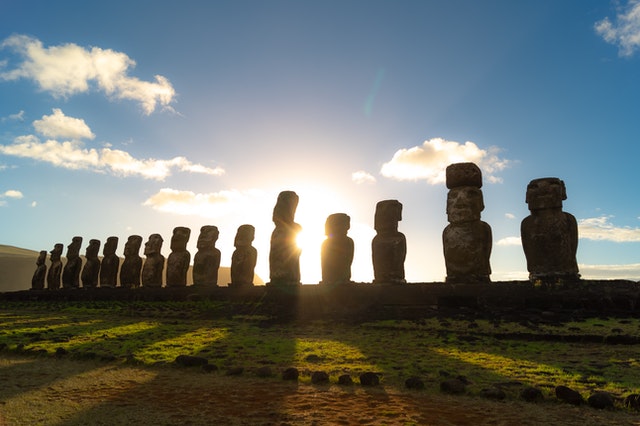
For some people, just running a marathon or half marathon is achievement enough. However, others seek out special scenery to make their experience that much more memorable.
There is certainly no shortage of races in outstanding locations to choose from. The Angkor Wat Half Marathon is one example. Another is the Easter Island Marathon. Here you can find all the insights you need to know about this amazing event.
About the History of Easter Island
Easter Island, also known as Rapa Nui, is located in Polynesia and is a territory of Chile. According to Encyclopedia Britannica, it got its English name from the Dutch who were the first Europeans to visit the island, arriving on Easter. It’s a small, hilly island formed by extinct volcanoes.
Although it has a sunny, dry climate with an average temperature in the hottest months of 73 F and in the coldest months of 64 F, it has sparse native plant life and is covered mostly in grass and ferns. The island is only 14 miles long and 7 miles wide with a total area of a mere 63 square miles. At last count, it had a population of 7,750.
Easter Island is most famous for the giant stone statues scattered around it. Encyclopedia Brittanica explains the Polynesian people living there were observed worshipping these statues when the Dutch arrived in 1722. When the British arrived in an expedition led by Captain James Cook in 1774, the people were no longer honoring the statues, many of which had been toppled.
There are more than 600 of these statues visible today. They resemble humans, some of which have round heads and stubby bodies and others of which have slimmer shapes. Some even feature topknots on their heads. Tradition says these statues were made to commemorate people who had died, and they were always placed facing inland.
Logistics of the Easter Island Marathon
According to the World’s Marathons website, the Easter Island Marathon features an out and back course. It begins in the center of the only town on the island, crosses the center of the island, and turns around at a beach. The event also offers a 10K and a half marathon for those looking to run shorter distances. Due to limited accommodations on the island, only 180 people can participate in the events.
One runner, Halef, who completed the Easter Island Marathon in 2016, maintains a blog called Round the World Guys. On his blog, he explained that of the 180 participants the year he participated, only 40 completed the marathon. The rest participated in the other events.
He noted this made the Easter Island Marathon running experience a lonely one at times, and it required a positive mindset to complete the race. However, Halef explained that the year he participated, a pasta party was held the night before the race and all runners received a shirt and windbreaker.
Halef also noted some unique aspects to the Easter Island Marathon. These include the facts that the race has no time limit, that absolutely no littering is allowed along the race course, and that the race does not begin on the morning of race day until after a Mass is held. He also explained that Polynesian dancers put on a performance at the closing ceremony.
Another runner who completed the Easter Island Marathon, Bill Arthur, reviewed his participation for the Travelling Fit website. He described in detail his 2014 experience and noted that in addition to the running races, other events are also held, including a triathlon and mountain bike races. He explained that although mountain biking is featured, for the running races, only paved roads are used.
Arthur also noted that the most challenging aspect of the race for him was the hill running involved. Because the race uses an out and back route, the same hill must be climbed twice. He explained that runners climb the hill the first time about two-thirds of the way to the turn-around point and then again on the way back. He noted that on the return route, runners only have 5 to 6 kilometers to ascend the 210-meter hill.
Post-Race Activities
Although it may be difficult to manage an ice bath after completing the Easter Island Marathon, there are other ways you can spend your time after the race. As the World’s Marathons website notes, you may have the chance to spend some quiet time observing cows and wild horses grazing around the island, or you may wish to try some diving, snorkeling, or surfing. Taking a bike ride or going horseback riding are other options, or you may prefer to take advantage of the opportunity to relax on a sandy beach. Whatever you choose, it’s sure to complete the great adventure offered by this event.
